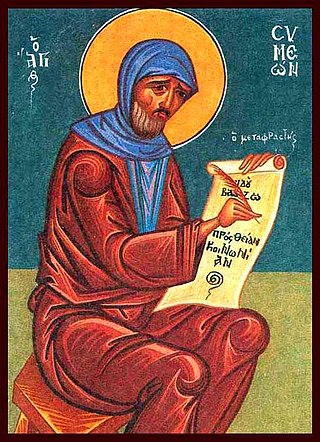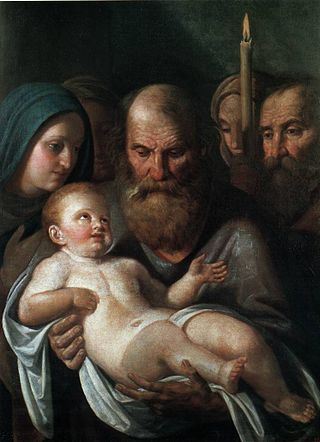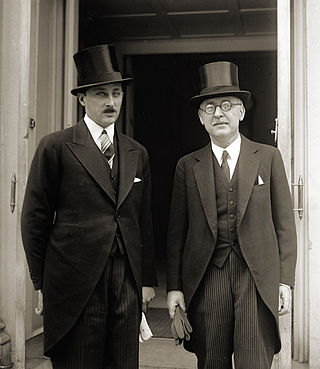
Boris III, originally Boris Klemens Robert Maria Pius Ludwig Stanislaus Xaver, was the Tsar of the Kingdom of Bulgaria from 1918 until his death in 1943.

Simeon Borisov Saxe-Coburg-Gotha is a Bulgarian politician who reigned as the last Tsar of the Tsardom of Bulgaria as Simeon II from 1943 until 1946. In 1946, the monarchy was abolished by a referendum, forcing Simeon into exile. Following the fall of communism in Bulgaria, Simeon returned to his home country in 1996, and founded the National Movement for Stability and Progress party. After winning the 2001 election as its leader, Simeon proceeded to govern Bulgaria as prime minister of the Republic of Bulgaria from 2001 to 2005.

Tsar SimeonI the Great ruled over Bulgaria from 893 to 927, during the First Bulgarian Empire. Simeon's successful campaigns against the Byzantines, Magyars and Serbs led Bulgaria to its greatest territorial expansion ever, making it the most powerful state in contemporary Eastern and Southeast Europe. His reign was also a period of unmatched cultural prosperity and enlightenment later deemed the Golden Age of Bulgarian culture.

The National Movement for Stability and Progress is a liberal, populist political party in Bulgaria. It was known as the National Movement Simeon II until 3 June 2007.

Symeon or Simeon, distinguished as Symeon Metaphrastes (Latin) or Symeon the Metaphrast, was a Byzantine writer and official regarded as a saint in the Eastern Orthodox Church. His feast day is celebrated on 9 or 28 November. He is best known for his 10-volume Greek menologion, a collection of saints' lives.

Simeon at the Temple is the "just and devout" man of Jerusalem who, according to Luke 2:25–35, met Mary, Joseph, and Jesus as they entered the Temple to fulfill the requirements of the Law of Moses on the 40th day from Jesus' birth, i.e. the presentation of Jesus at the Temple.

Simeon Uroš, nicknamed Siniša (Синиша), was a self-proclaimed Emperor of Serbs and Greeks, from 1356 to 1370. He was son of Serbian King Stephen Uroš III and Byzantine Princess Maria Palaiologina. Initially, he was awarded the title of despot in 1346, and appointed governor of southern Epirus and Acarnania in 1347 by his half-brother, Serbian Emperor Stephen Dušan. After Dušan's death in 1355, the Serbian throne passed to Dušan's son Stephen Uroš V, but despot Simeon decided to seize the opportunity in order to impose himself as co-ruler and lord of all southern provinces of the Serbian Empire. That led him to conflict with his nephew in 1356, when Simeon started to expand his control in southern regions of the Empire, trying to take Thessaly and Macedonia. He proclaimed himself Emperor of the Serbs and Greeks, creating a separate state, centered in regions of Thessaly and Epirus, where he ruled until his death in 1370. He was succeeded by his son Jovan Uroš.

Symeon (Simeon) of Polotsk or Symeon Polotsky was an academically-trained Baroque poet, dramatist, churchman, and enlightener of Belarusian descent who came from the Polish–Lithuanian Commonwealth to the Tsardom of Russia.
Marmais was a Bulgarian military commander, nobleman and komita (duke) of a western Bulgarian region during the reign of Emperor Simeon I (893–927). He was a descendant of an ancient Bulgar family. He participated actively in the Byzantine–Bulgarian war of 913–927 but he is better known for his interference and campaigns against the Principality of Serbia.
"Narode Makedonski" is folk revival song about the national awakening of the Macedonian people.

Dimitar Hristov Rizov or Rizoff was a Bulgarian revolutionary, publicist, politician, journalist and diplomat.

Simeon Traychev Radev was a Bulgarian writer, journalist, diplomat and historian, most famous for his three-volume book The Builders of Modern Bulgaria.

Theodosius of Skopje was a Bulgarian religious figure from Macedonia who was also a scholar and translator of the Bulgarian language. He was initially involved in the struggle for an autonomous Bulgarian Church and later in his life, he became a member of the Bulgarian Academy of Sciences. Although he was named Metropolitan Bishop of the Bulgarian Exarchate in Skopje, he is known for his failed attempt to establish a separate Macedonian Church as a restoration of the Archbishopric of Ohrid.

Simeon or Simyon Simev is a poet, essayist and journalist in North Macedonia.

Simeon Raykov is a Bulgarian former professional footballer who played as a winger.

Simeon Nenchev Slavchev is a Bulgarian professional footballer who plays as a defensive midfielder for Lokomotiv Sofia.

Simon is a given name, from Hebrew שִׁמְעוֹן Šimʻôn, meaning "listen" or "hearing". It is also a classical Greek name, deriving from an adjective meaning "flat-nosed". In the first century AD, Simon was the most popular male name for Jews in Roman Judea.
Simeon Vratanja was an Ottoman Catholic prelate who served as the first Eparch of Marča (1609–11), the westernmost eparchy of the Serbian Patriarchate of Peć in the Serbian Orthodox Church, and after converting was the first Eastern Catholic Bishop of Marča (1611–28).
Simeon Račanin was a Serbian Orthodox monk and translator. He is mentioned in 1700 along with several other monks at the Rača monastery, all wearing the epithet Račanin: Kiprijan Račanin, Jerotej Račanin, Hristifor Račanin, Ćirjak Račanin, Teodor Račanin, and Gavrilo Stefanović Venclović-Račanin. One of Simeon's works, dated to 1676, is held at the National Museum (Prague).

Simeon Popović, sometimes romanized as Symeon Popovich, was a Serbian Orthodox hieromonk and the first abbot of the Dajbabe Monastery, which he founded.















